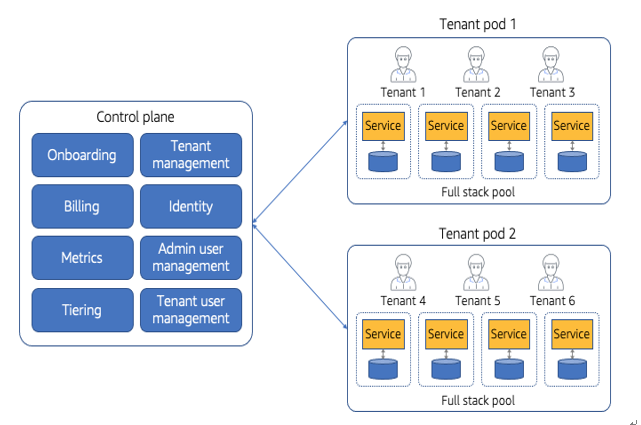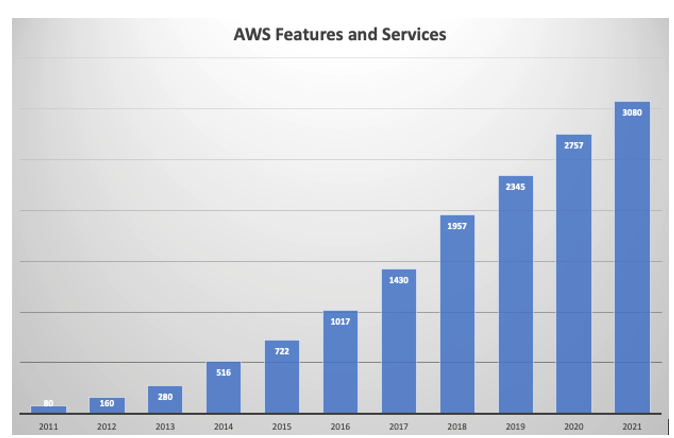On the left-hand side of this image, we have our basic tier services. These services cover all the functionality that is needed for our SaaS environment. However, you’ll note that they are deployed in different silo/pool configurations. Service 1, for example, has siloed compute and pooled storage. Meanwhile, Service 2 has siloed compute and siloed storage. Services 3-6 are all pooled compute and pooled storage. The idea here is that I’ve looked across the needs of my pooled tenants and identified, on a service-by-service basis, which silo/pool strategy will best fit the needs of that service. The optimizations that have been introduced here were created as baseline strategies that were core to the experience of any tenant using the system.
Now, where tiers do come into play is when you look at what I’ve done with the premium tier tenants. Here, you’ll notice that Services 5 and 6 are deployed in the basic tier and they’re also deployed separately for a premium tier tenant. The thought was that, for these services, the business determined that offering these services in a dedicated model would represent value that could distinguish the experience of the system’s premium tier. So, for each premium tier tenant, we’ll create new deployments of Service 5 and 6 to support the tiering requirements of our tenants. In this particular example, Tenant 3 is a premium tier tenant that consumes a mix of the services on the left and these dedicated instances of Services 5 and 6 on the right.
Approaching your deployment model in this more granular fashion provides a much higher degree of flexibility to you as the architect and to the business. By supporting silo and pool models at all layers, you have the option to compose the right blend of experiences to meet the tenant, operational, and other factors that might emerge throughout the life of your solution. If you have a pooled microservice with performance issues that are creating noisy neighbor challenges, you could silo the compute and/or storage of the service to address this problem. If your business wants to offer some parts of your system in a dedicated model to enable new tiering strategies, you are better positioned to make this shift.
This mixed mode deployment model, in my opinion, often represents a compelling option for many multi-tenant builders. It allows them to move away from having to approach problems purely through the lens of full stack solutions that don’t always align with the needs of the business. Yes, there will always be solutions that use the full stack model. For some SaaS providers, this will be the only way to meet the demands of their market/customers. However, there are also cases where you can use the strengths of the mixed mode deployment model to address this need without moving everything into a full stack silo. If you can just move specific services into the silo and keep some lower profile services in the pool, that could still represent a solid win for the business.


